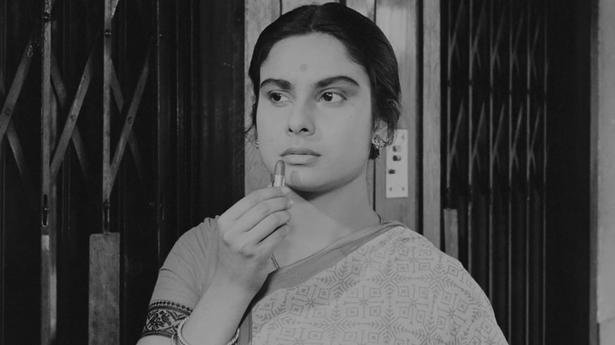
Indian art cinema gives us an ongoing resource to live through disorienting times: Rochona Majumdar
The Hindu
Interview with the historian whose new book talks of India’s ‘art cinema’ moment and the recalcitrant artistic and intellectual practices it represented
A new book on Indian art cinema focuses on Satyajit Ray, Ritwik Ghatak and Mrinal Sen to bring in fresh historical perspectives and understanding to the genre, its concerns and trajectories. Historian Rochona Majumdar, author of Art Cinema and India’s Forgotten Futures: Film and History in the Postcolony , talks about the many competing but no less legitimate ways of being Indian that art cinema animated. Excerpts:
Your book addresses the film scholar and the cineaste, the academic and film society activist. How did it take shape and what inspired it?
I trained as a historian of modern India with an abiding interest in issues of postcoloniality and subaltern histories. Over the years, I became increasingly convinced that the history of modern India must engage more with the post-Independence period. To understand the ideas of India — and I emphasise the plural here — we need to focus on the post-1947 years and analyse Indian pasts and futures from that point. Furthermore, the imagination of the modern nation was not just expressed in books. It lay in aesthetic and popular forms to understand which historians need to retool themselves and bring their practice into conversation with other disciplines. The book stemmed from these insights.
As a historian, I did not want to shy away from thinking about aesthetic objects such as films as instantiations of history-making. Instead of treating films as a “source” for writing history, I wanted to understand a mass democracy like India by thinking historically with its preeminent mass product — the cinema.
To be sure, I am passionate about films. Even though I was aware of the separation between art and mainstream films growing up I was not invested in it. But the division interests me intellectually. In the context of Indian Film Studies, even as scholars acknowledge the place of art films they are immediately dismissed as elitist, the cinema of a minority, a bastion of privilege, in cahoots with the state, and so forth. Yet, even with the most celebrated filmmakers — I discuss three of them in my book — it is really difficult to get good prints of films that are properly subtitled. I asked myself what it meant to think about a body of films that were not part of the film-industrial structures and yet were indispensable in considering imaginations of the new nation state.
You consider art cinema a distinct form of knowledge. Its pedagogy and practices involved filmmakers, the film society movement, the state. There are synergies between art and state, imaginations and institutions, aesthetic visions and political projects, which at certain times are complementary and at other times (often necessarily) at odds with each other. How do you see the evolution of these dynamics post-90s, when the state retreated from culture and a Hindu majoritarian imagination began to gain supremacy? How do you think the art cinema project grapples with it, if at all?
As you know, my account of art cinema begins when there was shared ground between filmmakers, cineastes, state, and government. Both mainstream and art films sought to understand and communicate a sense of the postcolonial present that, despite bearing the scars of colonialism, was nevertheless poised towards a future of progress and development. During the 1960s, that sense of hope and a naturalised sense of transition lost its spell for many. In my book, I focus on three foundational figures — Satyajit Ray, Ritwik Ghatak, and Mrinal Sen — to analyse the ways in which they apprehended the postcolonial present in the wake of their disillusionment with developmental processes. As I state in the book, the position of art cinema from the 1960s on is not just about a break with a history of cinematic form and practice. It is a new mode of apprehending postcolonial history.











